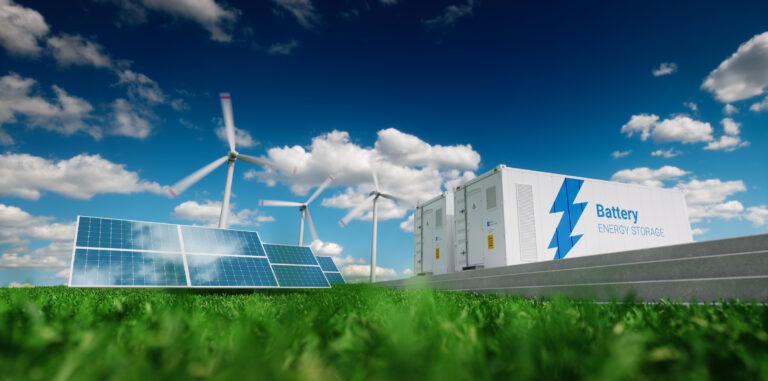New York ISO (NYISO), the state’s grid operator, announced in November that it is ordering a pair of peaker plants in the greater New York City area to stay in operation for two to four years beyond their original retirement dates to help maintain sufficient generating capacity until new supplies come online. The decision to retain the plants – the Gowanus and Narrows peakers – comes just as load in the area is poised to climb higher, while the fleet of operating peakers has dwindled in size. In this Energy Insight, we take a closer look at how the remaining peaker plants are taking on increasing responsibility to ensure system reliability in the face of these headwinds.
Unique among generators, peaker plants have fast-ramping capabilities that enable them to quickly reach full output in response to sudden surges in electricity demand, such as during a heatwave or an unplanned plant outage. The facilities are typically highly inefficient and run infrequently, dispatching only when prices are high. For these reasons, peaker plants play an important but niche role in system reliability, providing relatively small but timely supplies of electricity, filling a supply gap that slower-ramping baseload generators are not equipped to address.
The area with the largest amount of peaker plants and the subject of this analysis is NYISO Load Zone J. Home to population-dense Manhattan and the outer boroughs of Queens, Brooklyn, the Bronx, and Staten Island, Zone J accounts for one-third of the state’s entire electricity load. Sweeping decarbonization goals under progressive state and local officials – such as building electrification under Local Law 97 that went into force just this year – has had the effect of jumpstarting demand. As the chart below shows, even with the addition of distributed solar generation and energy efficiency improvements, building electrification and deployments of electric vehicles will start to have a material impact on load. By the end of the decade, when such initiatives start to reach scale, peaking generators will take on even greater importance for maintaining system reliability.

The importance of the Zone J peaker plants becomes even more evident when considering that the New York City region faces restrictions on the amount of power it can import from neighboring areas due to transmission capacity limitations. Additionally, the dense population of the region, and the resistance to the siting of new plants in close proximities to communities, has hindered the development of new power sources.
Despite the growing need for peaking resources, peaker plants have been in the crosshairs of elected officials and regulators because of their high rate of emissions and as they are predominantly located near low-income populations. To slash emissions from the facilities, the Department of Environmental Conversation enacted the “Peaker Rule,” a regulation that sets emissions limits for simple cycle combustion turbines, estimated to impact 3.3 GW of capacity across the state. Regulators also enacted the New York City Residual Oil Elimination, a rule to eliminate the combustion of fuel oil numbers 6 and 4 in New York City by 2025, affecting about 3 GW of capacity.
As these strict compliance regimes continue to phase in, peaker plants have had to either retrofit with emission controls, suspend operations on a seasonal basis, or serve as an emergency resource when there’s system-wide outages. But because retrofits are not economically feasible for many of the older facilities, the rules have led to a rash of retirements of peaker capacity in Zone J. As the map shows, the retirements are spread across Queens and Brooklyn. An additional prospective retirement not reflected in the map includes the 17 MW gas-fired 59th Street generator in Manhattan, which is slated for closure in 2025. The 37 MW petroleum-fired 74 St. GT plant in Manhattan and the 16 MW gas-fired Astoria GT plant in Queens have also been proposed for retirement, though it remains unclear when or if they may shut down.

Having explored Zone J’s peak load growth and the dwindling capacity of its peaker fleet, we turn next to the role peaker generators played in the past to gauge their contribution to resource adequacy. In particular, we selected Sept. 9, 2018, a day when a heat wave pushed demand to the second-highest level in the last decade.
As depicted in the following chart, generation from peaker plants during the peak-load hour reached about 1,170 MW, accounting for over 10% of all generation, forming a relatively small but critical supply for keeping the system balanced. During this peak-load event, the gas-fired Gowanus 2 & 3 and Narrows 1 & 2 generators being retained by NYISO made up nearly half of all the peaker generation. This underscores the importance of the facilities and the rationale for NYSIO to postpone their retirement to either May 1, 2027, or May 1, 2029, if reliability needs persist.

Under NYISO’s high-load forecast, Zone J could face a similar peaking event this year and next. However, should such an event occur, NYISO will be without the already retired peaker plants that helped meet peak load in September 2018, placing even greater reliance on the existing fleet to shoulder the burden.
Given the risk of a capacity shortfall, NYISO has indicated that the retirement of the Gowanus and Narrows peakers is contingent upon the 1,250 MW Champlain Hudson Power Express transmission line achieving commercial operation. The power line, which will ship hydroelectricity from Quebec, Canada to New York City, is currently under construction and expected to enter service in spring 2026. The buildout of battery storage facilities may also hasten the retirement of peakers in Zone J, given the ability of such resources to dispatch energy when it is needed most and to be sited in close proximity to major load centers.
NYISO’s out-of-market measure to postpone the closure of the Gowanus and Narrows peakers illustrates system reliability risks and the need for regulatory flexibility, as rapid changes to the resource mix risk increases concerns.









